Acrylic Landscape Painting Level 2
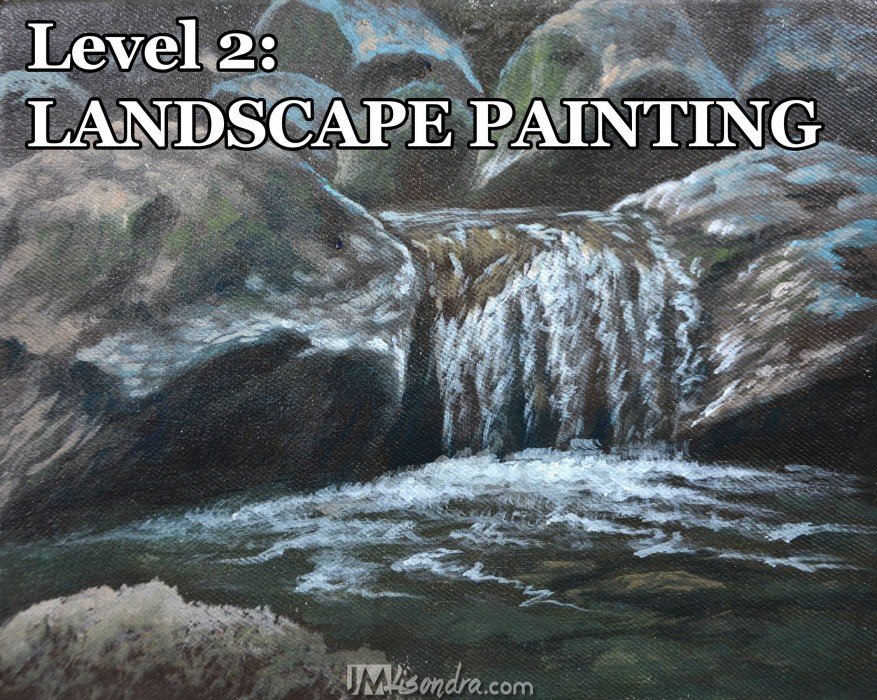
About Course
In this tutorial, you will learn an advance landscape painting but I keep it in more simple subject such as focusing on a small waterfall, rocks, bushes and trees. You can also learn on how to add shades and highlights to make simple subjects realistic.
Materials:
1.Acrylics Paints needed:
- Acrylic Paints – 5 limited colors
- Artist Brushes – Different brushes
- Stretched Canvas – You can also use card board or thicker than a paper
- Water – in a small jar to thin the paint
- Color Palette – where you mix the paints, you can use paper plate or paper palette
- Patience – you need more patience to start, since it’s not always easy at the beginning but you can do it!
Recommended Brands: (Student Grades)
- Liquitex Basics
- Reeves
- Pebeo Opaque and
- Sakura
- My favorites are sakura opaque and pebeo opaque.
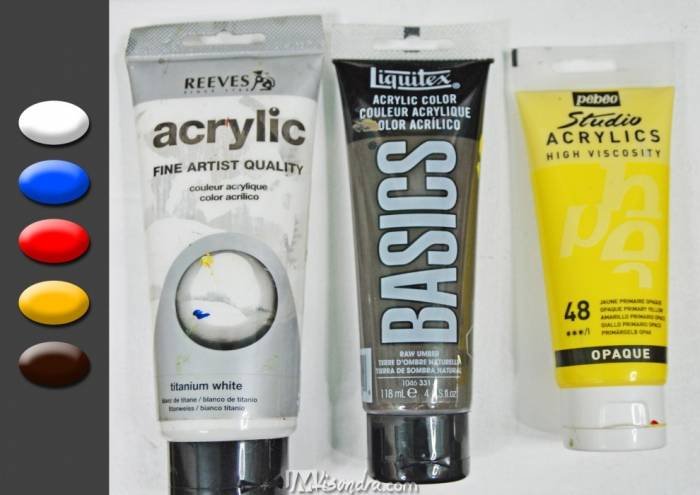
2. Brushes
I only used few brushes when I painted landscape paintings both in oils and acrylics. I am a self-taught artist and no one taught me to used specific brushes for a specific medium. Sometimes I used watercolor brushes in acrylic painting and still works for me and even in oil but not too often. I am not also picky when it comes with brands and prices. Cheap or expensive it’s all the same for me. As long as I am comfortable and it works. Below are the most common brushes I used in my paintings, acrylic, oil or watercolor, I just choose which one will fit on my needs.
Flat Brush

Use this 2 inches flat brush for bigger surface or when you paint the sky because it can make painting faster. You can also use this brush for painting bushes, tree leaves and grasses on medium and large size canvasses. I mostly used synthetic and nylon types but I recommend using natural bristles because its stronger. You can also use smaller flat brush like 1-inch or 1 1/2-inch. You can buy some recommended brushes or my AMAZON page.
Number 12 Nylon Flat Brush

This brush is almost the same with the first one. You can even replace it with this one when you are painting smaller canvas. The function is the same, it’s mainly for painting large part of the canvas like the clouds and sky. This is also good for painting bushes, grasses and tree leaves. When this one becomes older, do not throw it away because the older it becomes the better it works. I have plenty of old brushes like this and it works well on painting bushes. You can also use smaller or bigger than this one like number 11 or 13.You can buy some recommended brushes or my AMAZON page.
Number 10 Natural Bristle Flat Brush
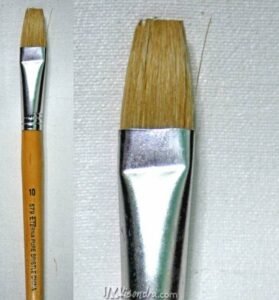
This one is good for painting bushes, grasses and tree leaves. The difference is that this one does better because even if it’s new it works well. Unlike the Nylon flat brush new ones are really hard to create beautiful textures. You can also choose other sizes like number 11 or 9.You can buy some recommended brushes or my AMAZON page.
Number 8 Nylon Flat Brush

This is a medium size brush good for detailing like painting tree trunks, branches, adding details on the clouds, mountains and other part that needs this size. You can also use numbers 9 or 7.You can buy some recommended brushes or my AMAZON page.
Number 14 Natural Bristle Fan Brush
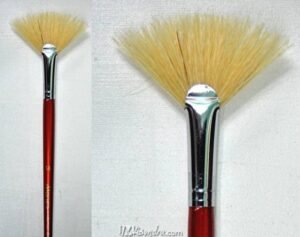
Although I don’t usually use this kind of brush, I still recommend you to have this one because it’s still good for adding details on tree leaves and grasses. And this was really made for that purpose. I was asking myself before why I needed to used this kind of brush when I could used natural bristle flat brushes with the same result? The answer is that fan brushes are made for that purpose only. To create good textures specially on grasses. Sometimes this one does better with bristle flat brush. I actually recommend to use smaller size like numbers 5 to 10. You can buy some recommended brushes or my AMAZON page.
Number 7 Nylon Flat Brush (Small Type)
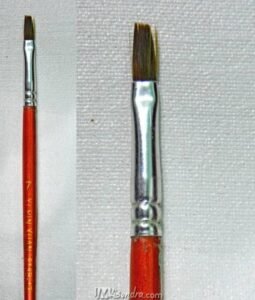
You can compare the sizes of the brushes on the banner. This is a small type nylon flat brush good for smaller details on painting tree trunks and branches. You can even use this one to paint leaves by painting it one by one to create solid textures. You can buy some recommended brushes or my AMAZON page.
Number 1 Nylon Round and Number 00 Nylon Liner Brush
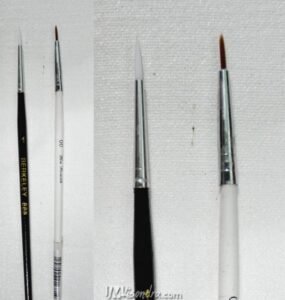
You can select which one do you like the most. Number 00 is of course smaller and can do smaller details but Number 1 can also be good on painting lines. The difference is that Number 1 can create bigger lines or details. Both are good for smaller branches and painting solid tree leaves one by one.
Whatever brush you are using as long as you are comfortable and it can give the results you want, I must say that you are using the right kind of brush. I can even use a pointed smaller brush to do the leaves of the forest but it takes more time and the results will still almost the same and more detailed. The most important thing is to practice using your brush. The more experience you have the better results you can achieve.
When I started painting 18 years ago, I practiced on my own and everyday I discovered something new. Some technique that give me good results. I keep painting almost everyday and got to know my brushes. How I should hold it and the right pressure on the canvas’ surface and many more. I keep learning until I became better than yesterdays.
You can buy some recommended brushes or my AMAZON page.
3. Stretch Canvas
You can always buy canvas on your local art store, galleries and online. Most of the canvas they sell are pre-primed, meaning it’s primed with gesso. You can distinguish it by touching the surface and you feel the smoothness. You can choose any size but mostly on my tutorial I choose smaller like 12×16 inches and 10×12 inches. You can find some on my AMAZON page at very low price.
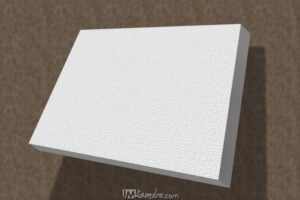
4. Other Materials
- Easel – If you can afford an easel, then this is a good investment for beginners because you can have a better comfortable position while painting.
- Palette – You can use paper plate as your palette or you can buy a good artist palette for color mixing.
- Water – It should always be ready to clean your brush because acrylic dries fast and it will be hard to get rid of dried paints on your brushes or you may throw it away.
- Rag – Dry rag to clean your brush.
Course Content
Simple Landscapes
How To Paint Rocks With Highlights And Shadows
37:14How To Paint Flower Garden With Pathway And Big Rock In Acrylic
53:38How To Paint Shallow River With Rocks In Acrylic
41:52How To Paint Ferns And Dried Leaves In Acrylic
45:46
Student Ratings & Reviews

